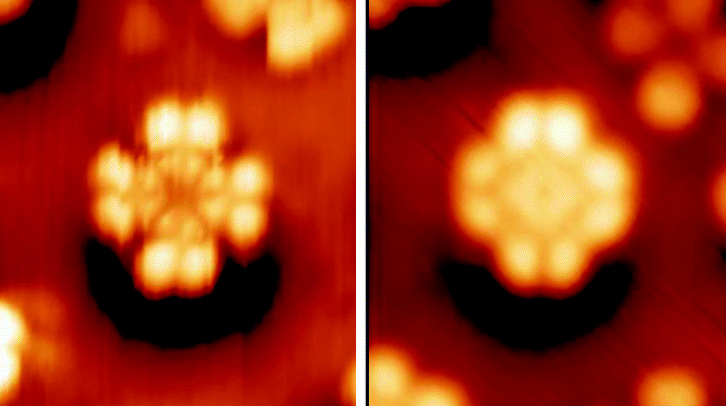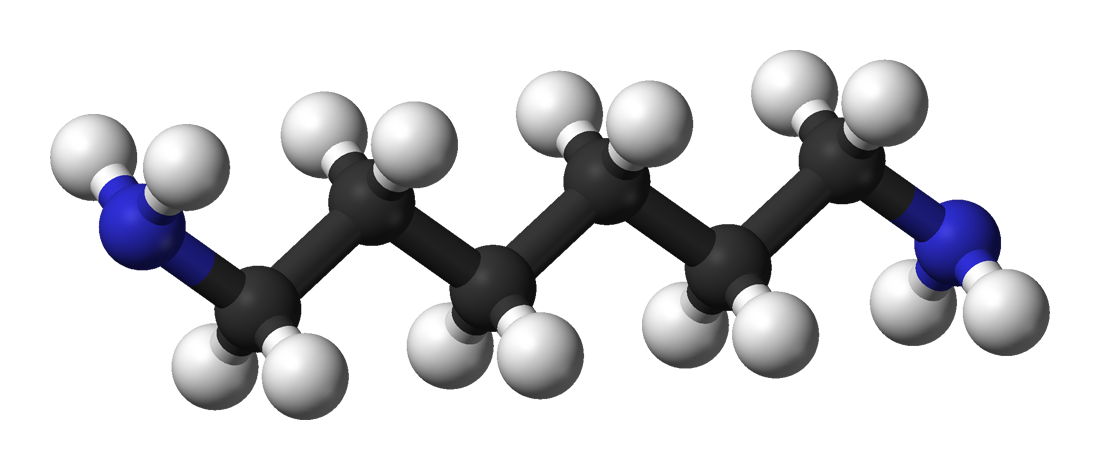|
Isoindole
In organic chemistry and heterocyclic chemistry, isoindole consists of a benzene ring fused with pyrrole. The compound is an isomer of indole. Its reduced form is isoindoline. The parent isoindole is a rarely encountered in the technical literature, but substituted derivatives are useful commercially and occur naturally. Isoindoles units occur in phthalocyanines, an important family of dyes. Some alkaloids containing isoindole have been isolated and characterized.Heugebaert, Thomas S. A.; Roman, Bart I.; Stevens, Christian V. "Synthesis of isoindoles and related iso-condensed heteroaromatic pyrroles" Chemical Society Reviews 2012, volume 41, pp. 5626-5640. Synthesis The parent isoindole was prepared by flash vacuum pyrolysis of an N-substituted isoindoline. N-Substituted isoindoles, which are easier to handle, can be prepared by dehydration of isoindoline-N-oxides. They also arise by myriad other methods, e.g., starting from xylylene dibromide (C6H4(CH2Br)2). Structure and ... [...More Info...] [...Related Items...] OR: [Wikipedia] [Google] [Baidu] |
Phthalocyanine
Phthalocyanine () is a large, aromatic, macrocyclic, organic compound with the formula and is of theoretical or specialized interest in chemical dyes and photoelectricity. It is composed of four isoindole units linked by a ring of nitrogen atoms. = has a two-dimensional geometry and a ring system consisting of 18 π-electrons. The extensive delocalization of the π-electrons affords the molecule useful properties, lending itself to applications in dyes and pigments. Metal complexes derived from , the conjugate base of , are valuable in catalysis, organic solar cells, and photodynamic therapy. Properties Phthalocyanine and derived metal complexes (MPc) tend to aggregate and, thus, have low solubility in common solvents. Benzene at 40 °C dissolves less than a milligram of or CuPc per litre. and CuPc dissolve easily in sulfuric acid due to the protonation of the nitrogen atoms bridging the pyrrole rings. Many phthalocyanine compounds are, thermally, very stabl ... [...More Info...] [...Related Items...] OR: [Wikipedia] [Google] [Baidu] |
1,3-Disubstituted Isoindolines
Isoindoline is a heterocyclic organic compound with the molecular formula C8H9N. The parent compound has a bicyclic structure, consisting of a six-membered benzene ring fused to a five-membered nitrogen-containing ring. The compound's structure is similar to indoline except that the nitrogen atom is in the 2 position instead of the 1 position of the five-membered ring. Isoindoline itself is not commonly encountered, but several derivatives are found in nature and some synthetic derivatives are commercially valuable drugs, e.g. pazinaclone. Substituted isoindolines 1-Substituted isoindolines and isoindolinones are chiral. Isoindolylcarboxylic acid and 1,3-disubstituted isoindolines are constituents of some pharmaceuticals and natural products. Isoindolines can be prepared by 1,2-addition of a nucleophile onto a bifunctional ε-benzoiminoenoates followed by intramolecular aza-Michael reaction. Another route involves +2cycloaddition of the azomethine ylides (e.g. (CH2)2NR) to quino ... [...More Info...] [...Related Items...] OR: [Wikipedia] [Google] [Baidu] |
Isoindoline
Isoindoline is a heterocyclic organic compound with the molecular formula C8H9N. The parent compound has a bicyclic structure, consisting of a six-membered benzene ring fused to a five-membered nitrogen-containing ring. The compound's structure is similar to indoline except that the nitrogen atom is in the 2 position instead of the 1 position of the five-membered ring. Isoindoline itself is not commonly encountered, but several derivatives are found in nature and some synthetic derivatives are commercially valuable drugs, e.g. pazinaclone. Substituted isoindolines 1-Substituted isoindolines and isoindolinones are chiral. Isoindolylcarboxylic acid and 1,3-disubstituted isoindolines are constituents of some pharmaceuticals and natural products. Isoindolines can be prepared by 1,2-addition of a nucleophile onto a bifunctional ε-benzoiminoenoates followed by intramolecular aza-Michael reaction. Another route involves +2cycloaddition of the azomethine ylides (e.g. (CH2)2NR) to quino ... [...More Info...] [...Related Items...] OR: [Wikipedia] [Google] [Baidu] |
Imine
In organic chemistry, an imine ( or ) is a functional group or organic compound containing a carbon–nitrogen double bond (). The nitrogen atom can be attached to a hydrogen or an organic group (R). The carbon atom has two additional single bonds. Imines are common in synthetic and naturally occurring compounds and they participate in many reactions. Structure For ketimines and aldimines, respectively, the five core atoms (C2C=NX and C(H)C=NX, X = H or C) are coplanar. Planarity results from the sp2-hybridization of the mutually double-bonded carbon and the nitrogen atoms. The C=N distance is 1.29-1.31 Å for nonconjugated imines and 1.35 Å for conjugated imines. By contrast, C-N distances in amines and nitriles are 1.47 and 1.16 Å, respectively. Rotation about the C=N bond is slow. Using NMR spectroscopy, both E- and Z-isomers of aldimines have been detected. Owing to steric effects, the E isomer is favored. Nomenclature and classification The term "imine" was coine ... [...More Info...] [...Related Items...] OR: [Wikipedia] [Google] [Baidu] |
Heterocyclic Chemistry
A heterocyclic compound or ring structure is a cyclic compound that has atoms of at least two different elements as members of its ring(s). Heterocyclic chemistry is the branch of organic chemistry dealing with the synthesis, properties, and applications of these heterocycles. Examples of heterocyclic compounds include all of the nucleic acids, the majority of drugs, most biomass (cellulose and related materials), and many natural and synthetic dyes. More than half of known compounds are heterocycles. 59% of US FDA-approved drugs contain nitrogen heterocycles. Classification The study of heterocyclic chemistry focuses especially on unsaturated derivatives, and the preponderance of work and applications involves unstrained 5- and 6-membered rings. Included are pyridine, thiophene, pyrrole, and furan. Another large class of heterocycles refers to those fused to benzene rings. For example, the fused benzene derivatives of pyridine, thiophene, pyrrole, and furan are quinol ... [...More Info...] [...Related Items...] OR: [Wikipedia] [Google] [Baidu] |
Copper Phthalocyanine
Copper phthalocyanine (CuPc), also called phthalocyanine blue, phthalo blue and many other names, is a bright, crystalline, synthetic blue pigment from the group of phthalocyanine dyes. Its brilliant blue is frequently used in paints and dyes. It is highly valued for its superior properties such as light fastness, tinting strength, covering power and resistance to the effects of alkalis and acids. It has the appearance of a blue powder, insoluble in most solvents including water. History The discovery of metal phthalocyanines can be traced to the observation of intensely colored byproducts from reactions of phthalic acid (benzene-1,2-dicarboxylic acid) or its derivatives with sources of nitrogen and metals. CuPc (copper phthalocyanine) was first prepared in 1927 by the reaction of copper(I) cyanide and ''o''-dibromobenzene, which mainly produces colorless phthalonitrile as well as an intensely blue by-product. A couple of years later, workers at Scottish Dyes observed the fo ... [...More Info...] [...Related Items...] OR: [Wikipedia] [Google] [Baidu] |
Pigment Yellow 139
Pigment yellow 139 is an organic compound that is used as a yellow-orange pigment. It is classified as a derivative of isoindoline. This yellow-orange solid is virtually insoluble in most solvents.K. Hunger. W. Herbst "Pigments, Organic" in ''Ullmann's Encyclopedia of Industrial Chemistry'', Wiley-VCH, Weinheim, 2012. The species is prepared by addition of ammonia to o-phthalonitrile to give the diiminoisoindoline, which in turn condenses with barbituric acid Barbituric acid or malonylurea or 6-hydroxyuracil is an organic compound based on a pyrimidine heterocyclic skeleton. It is an odorless powder soluble in water. Barbituric acid is the parent compound of barbiturate drugs, although barbituric acid ....Volker Radtke, Peter Erk andBenno Sens "Isoindoline Pigments" in Edwin B. Faulkner, Russell J. Schwartz in High Performance Pigments. Edited by Edwin B. Faulkner and Russell J. Schwartz, Wiley-VCH, Weinheim. 2009. References External links {{Commons category, Pigment ... [...More Info...] [...Related Items...] OR: [Wikipedia] [Google] [Baidu] |
Tautomer
Tautomers () are structural isomers (constitutional isomers) of chemical compounds that readily interconvert. The chemical reaction interconverting the two is called tautomerization. This conversion commonly results from the relocation of a hydrogen atom within the compound. The phenomenon of tautomerization is called tautomerism, also called desmotropism. Tautomerism is for example relevant to the behavior of amino acids and nucleic acids, two of the fundamental building blocks of life. Care should be taken not to confuse tautomers with depictions of "contributing structures" in chemical resonance. Tautomers are distinct chemical species that can be distinguished by their differing atomic connectivities, molecular geometries, and physicochemical and spectroscopic properties, whereas resonance forms are merely alternative Lewis structure (valence bond theory) depictions of a single chemical species, whose true structure is best described as the "average" of the idealized, hypothe ... [...More Info...] [...Related Items...] OR: [Wikipedia] [Google] [Baidu] |
International Union Of Pure And Applied Chemistry
The International Union of Pure and Applied Chemistry (IUPAC ) is an international federation of National Adhering Organizations working for the advancement of the chemical sciences, especially by developing nomenclature and terminology. It is a member of the International Science Council (ISC). IUPAC is registered in Zürich, Switzerland, and the administrative office, known as the "IUPAC Secretariat", is in Research Triangle Park, North Carolina, United States. This administrative office is headed by IUPAC's executive director, currently Lynn Soby. IUPAC was established in 1919 as the successor of the International Congress of Applied Chemistry for the advancement of chemistry. Its members, the National Adhering Organizations, can be national chemistry societies, national academies of sciences, or other bodies representing chemists. There are fifty-four National Adhering Organizations and three Associate National Adhering Organizations. IUPAC's Inter-divisional Committee on ... [...More Info...] [...Related Items...] OR: [Wikipedia] [Google] [Baidu] |
Methylene Group
In organic chemistry, a methylene group is any part of a molecule that consists of two hydrogen atoms bound to a carbon atom, which is connected to the remainder of the molecule by two single bonds. The group may be represented as , where the '<' denotes the two bonds. This can equally well be represented as . This stands in contrast to a situation where the carbon atom is bound to the rest of the molecule by a double bond, which is preferably called a , represented . Formerly the methylene name was used for both isomers. The name ““ can be used for the single-bonded isomer, to emphatically exclude methylidene. The distinction is often important, because the double bond is chemically di ... [...More Info...] [...Related Items...] OR: [Wikipedia] [Google] [Baidu] |
Isoindene
Isoindene is a flammable polycyclic hydrocarbon with chemical formula C9H8. It is composed of a cyclohexadiene ring fused with a cyclopentadiene ring. See also * Indene * Isoindole * Isoindenone Isoindenone is a polycyclic ketone with chemical formula C9H6O. It is a cross-conjugated. It is unstable. See also * Indene * Indenone * Isoindene Isoindene is a flammable polycyclic hydrocarbon with chemical formula C9H8. It is composed o ... Polycyclic nonaromatic hydrocarbons {{hydrocarbon-stub ... [...More Info...] [...Related Items...] OR: [Wikipedia] [Google] [Baidu] |
Pigment Yellow 185
Pigment yellow 185 is an organic compound that is used as a green yellow pigment and optical brightener. It is classified as a derivative of isoindoline. This yellow green compound is prepared by addition of ammonia to ''o''-phthalonitrile to give the diiminoisoindoline, which in turn condenses first with ''N''-methylcyanoacetamide and then with barbituric acid Barbituric acid or malonylurea or 6-hydroxyuracil is an organic compound based on a pyrimidine heterocyclic skeleton. It is an odorless powder soluble in water. Barbituric acid is the parent compound of barbiturate drugs, although barbituric acid ....{{cite book , last1=Radtke , first1=Volker , last2=Erk , first2=Peter , last3=Sens , first3=Benno , date=2009 , chapter=Isoindoline pigments , editor1-last=Faulkner , editor1-first=Edwin B. , editor2-last=Schwartz , editor2-first=Russell J. , title=High Performance Pigments , edition=2nd , publisher=Wiley-VCH , pages=221–241 , doi=10.1002/9783527626915.ch14 , isbn=978-3-52 ... [...More Info...] [...Related Items...] OR: [Wikipedia] [Google] [Baidu] |




